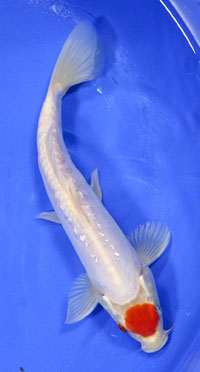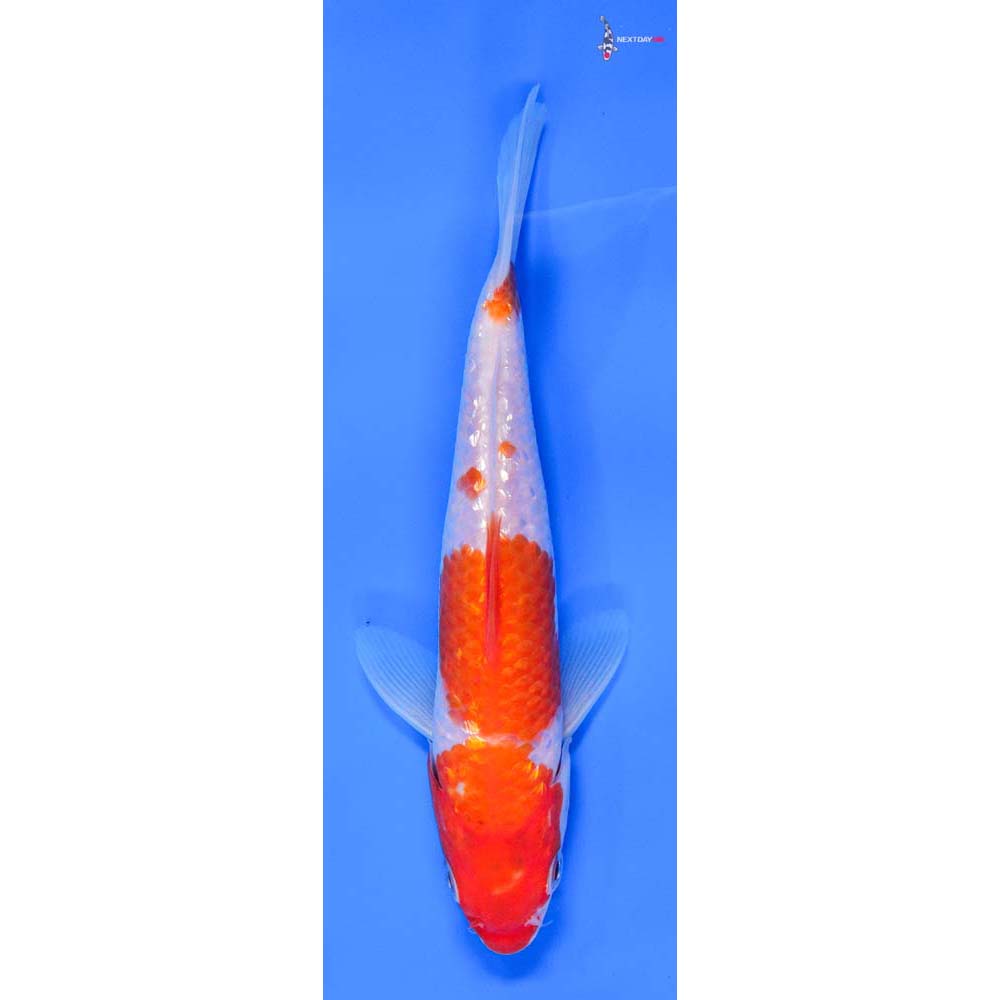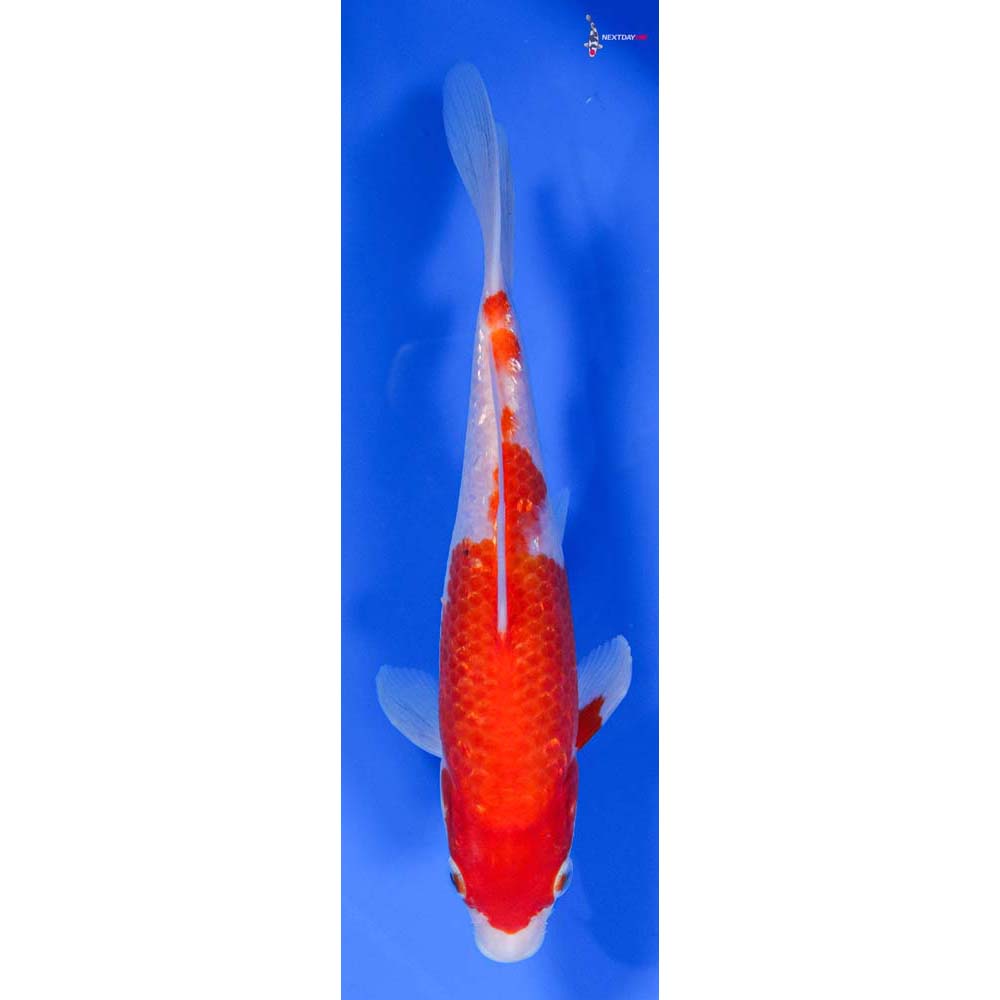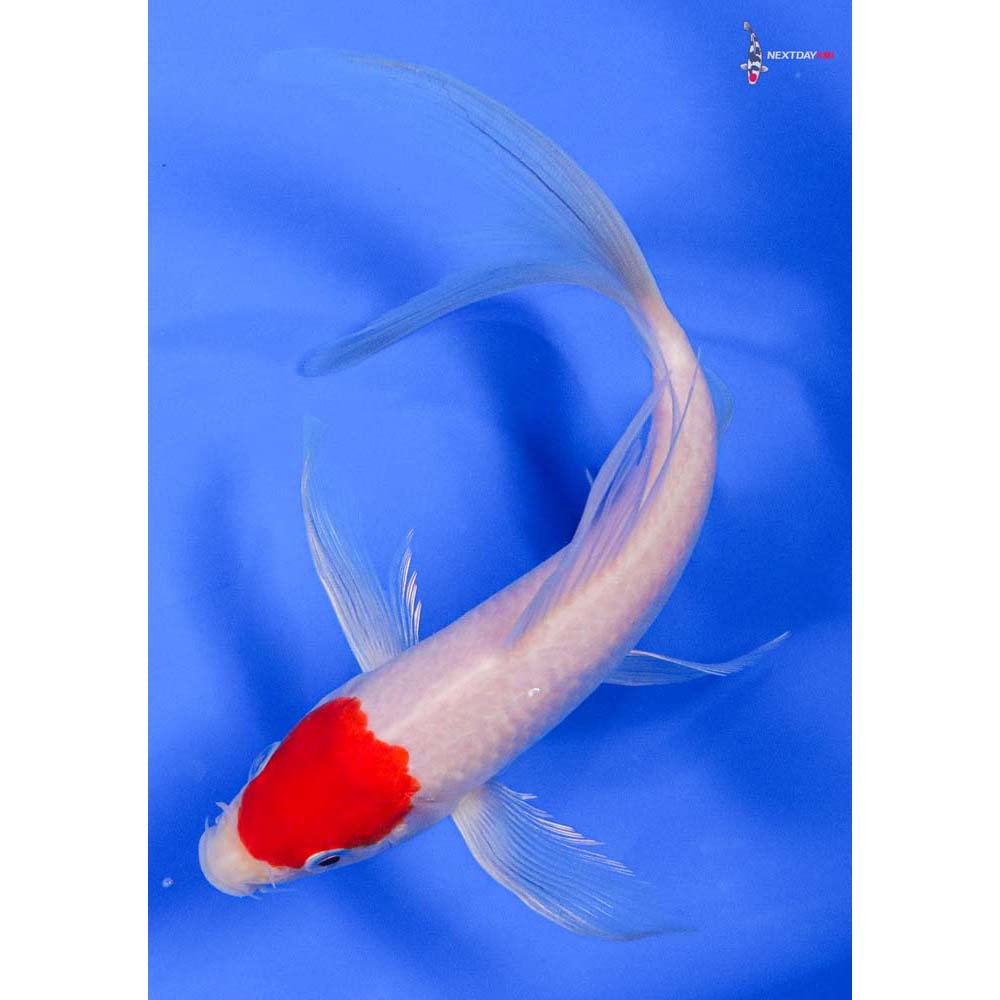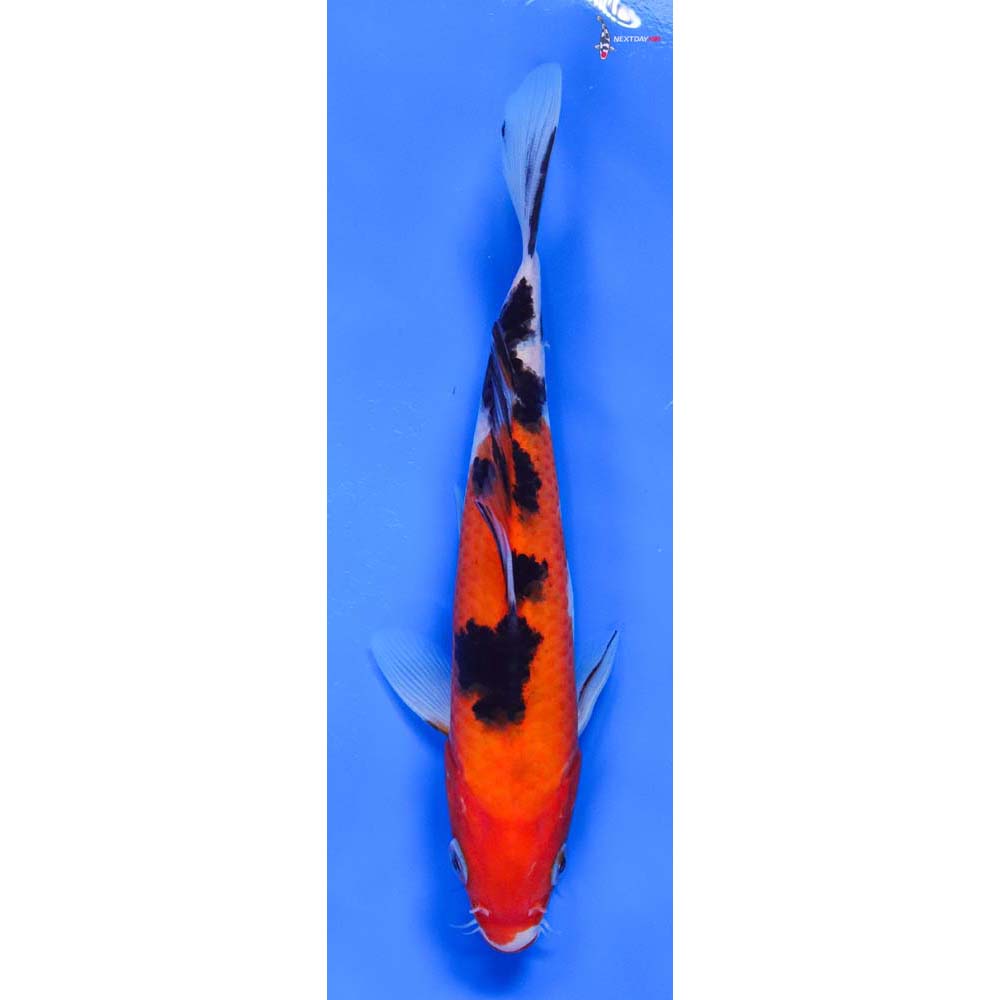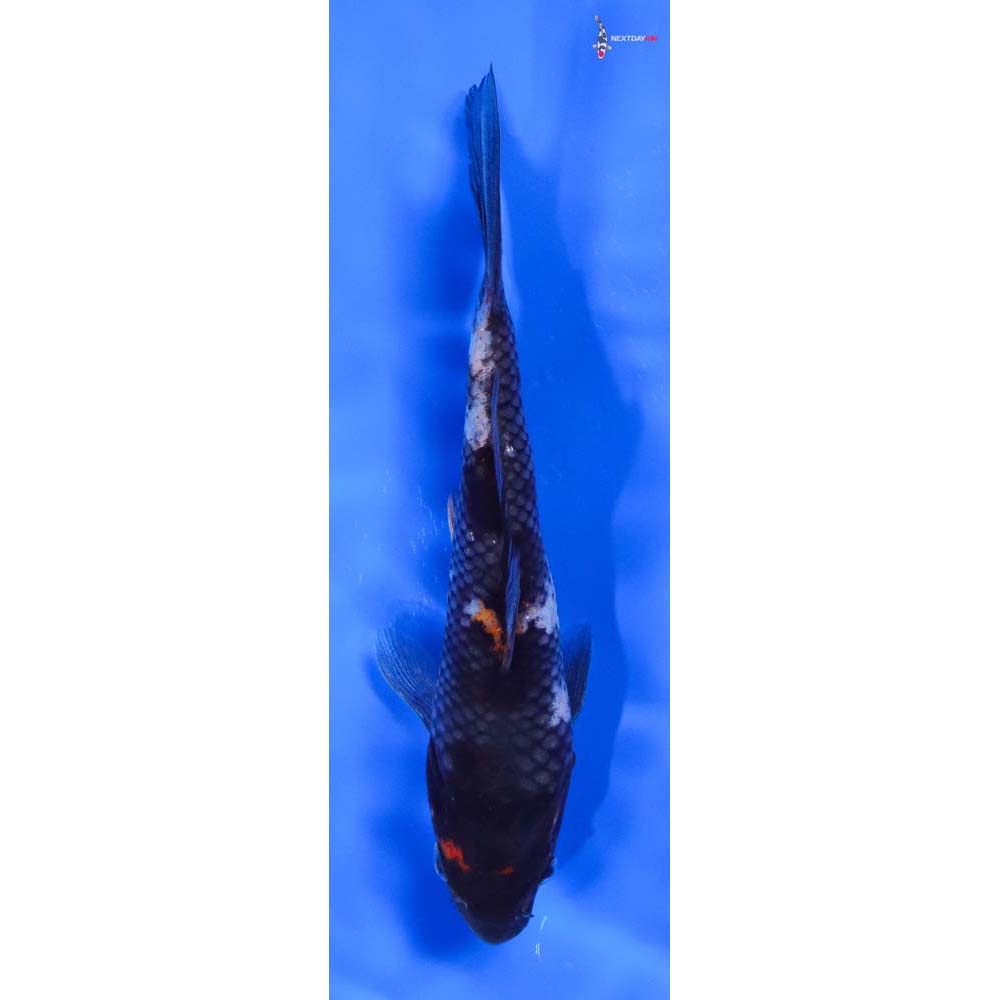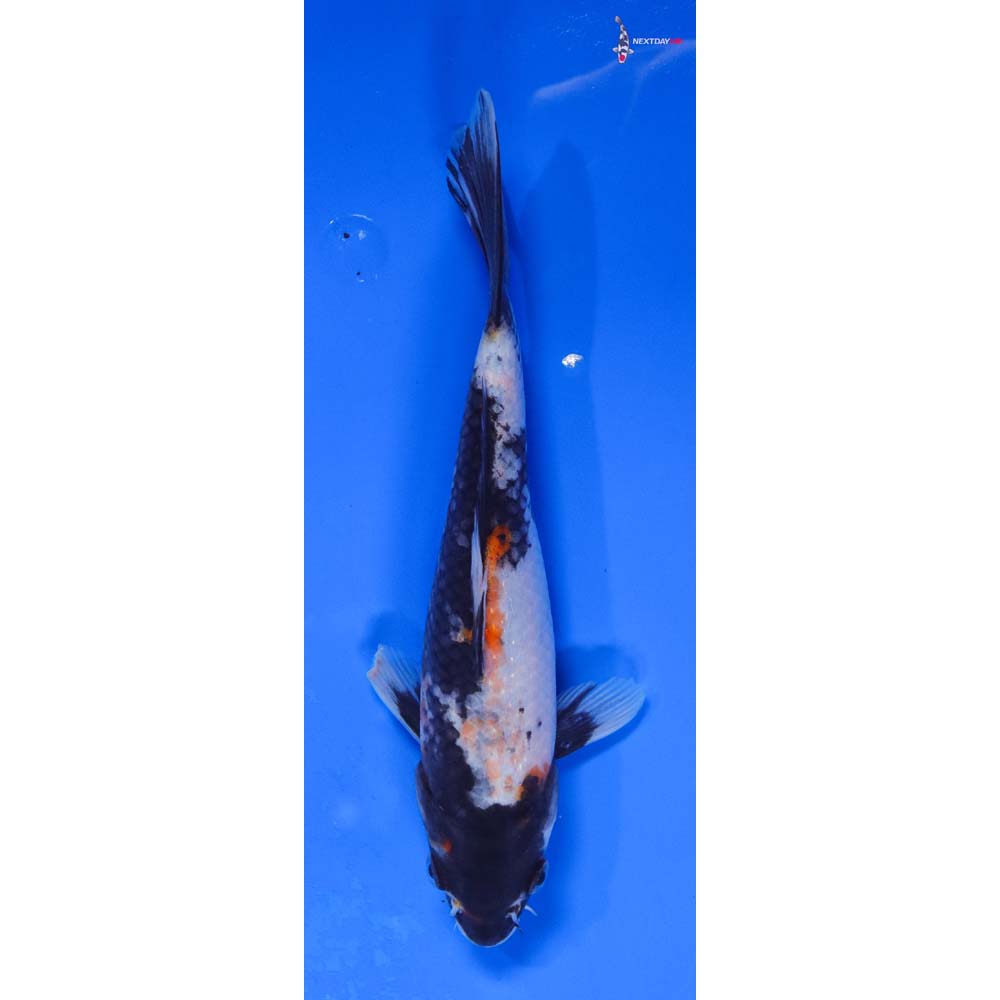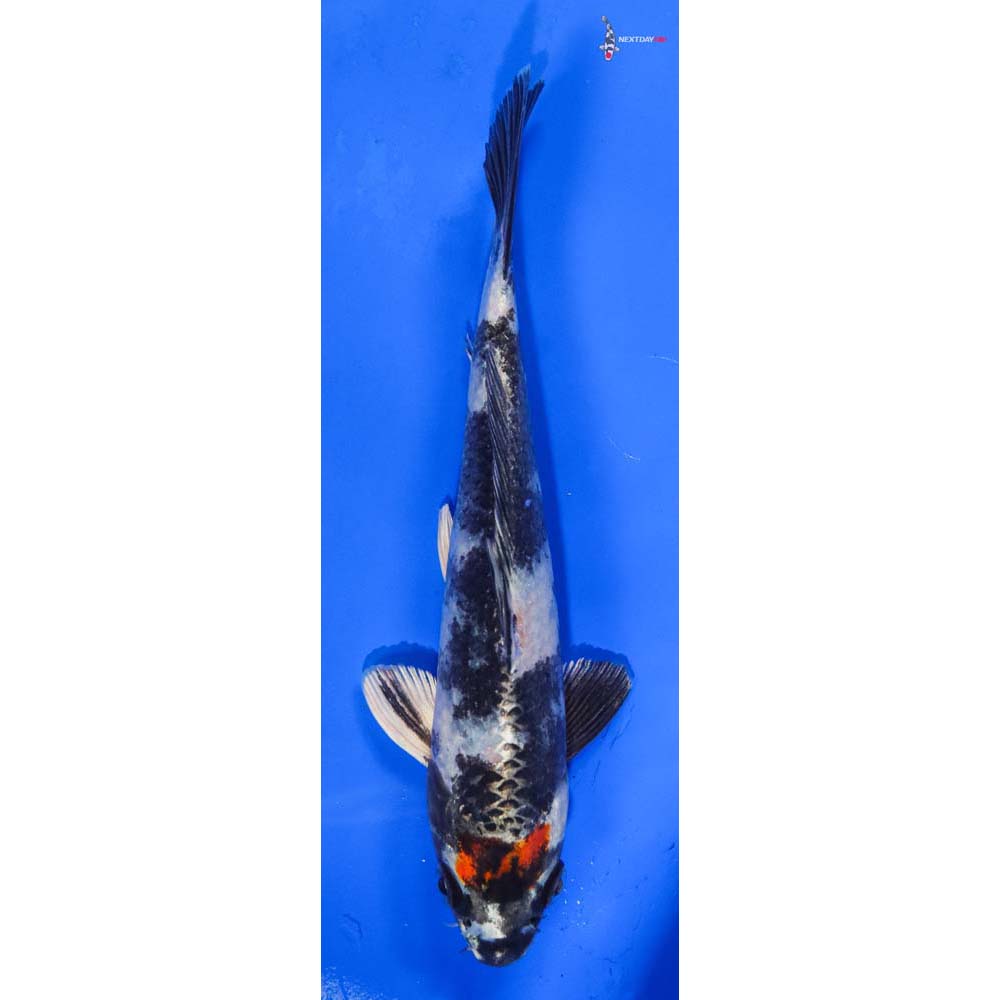Gosanke (goh-SAHN-keh) is a classification of koi fish that is comprised of three subcategories that includes Kohaku, Sanke and Showa. Taken from the Japanese for the Big Three families of the Tokugawa clan, Gosanke koi fish are also known as the “Big Three” in the U.S.
The Gosanke Koi Fish class is categorized by koi with solid white (shiro) that is overlaid with either the hi (red) or sumi (black), or a combination of all three. Additionally, selective crossbreeding has resulted in a wide spectrum of exciting Doitsu, Kin, Gin Rin and Butterfly varieties for enthusiasts to enjoy.
This group remains the most popular choice for enthusiasts and is usually one of the first types of koi fish to find its way into a pond or tank.
Kohaku
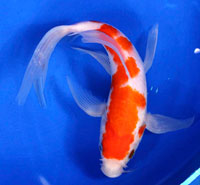
The first of the Big Three, the Kohaku (koh-HAH-koo) is also believed to be the first koi actively developed in the early 19th century. The current Kohaku class of koi has a solid white (shiro) body overlaid with red markings.
These markings—known as plates—are exhibited in steps. They are numbered as Nidan (two), Sandan (three), Yondan (four) and Godan (five). The more steps, the more valuable the Kohaku is considered.
Things to Look For:
- Striking, unblemished snowy- or milky-white body coloration (any yellowing is considered substandard)
- No shiro (white) in the interior of the hi
- Hi (red) should be a bright red and the edges (kiwa) well defined against the white body
- Hi should be consistent in hue and evenly distributed, but above the lateral line
- Tail and fins should be hi-less
Kohaku in stock
Tancho Kohaku
Shortened to Tancho (TAHN-choh), this highly sought-after Kohaku gets its name by virtue of the single hi pattern on the head. The most highly-prized shape on a Tancho’s head is a perfect circle, but other popular shapes include diamond, oval and heart.
This sub-variety draws its name from the Japanese Crane that shares the similar marking on the head. Whereas other varieties might display the single red marking on the head, the name “Tancho” by itself usually refers to Tancho Kohaku.
The Tancho’s popularity is due in part to the unpredictable nature of the breeding process, which produces relatively small numbers.
Things To Look For:
- White (shiro) in the body is unblemished and milky or snowy white (same as the Kohaku)
- Red (hi) marking is dark and bold
- Hi is consistent in coloration with crisp edges
- Hi covers most of the head without spreading
- No shiro is evident in the hi pattern
- Symmetrical (or as close as possible) shape in both hemispheres of the pattern
Tancho in stock
Taisho Sanke
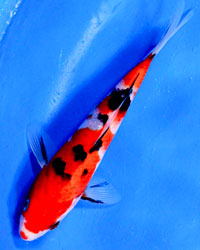
Traditionally known as Taisho Sanshoku, this koi is more often referred to by its abbreviated name, Sanke (SAHN-keh). Taisho represents the Japanese era in which the koi was developed (1912-1926). It is a tricolored koi comprised of a white base with a hi (red) and (sumi) black pattern overlaid.
Although the sumi distinction has become a little more blurred in recent times, a key distinction in the Sanke is that the sumi is usually absent on the head, belly or base of the pectoral fins, and is usually exhibited in a dorsal “stepping stone” pattern. There can be some thin, black lines in the pectoral fins, but they don’t fan out from the “knuckles” or base.
Things To Look For:
- Solid snowy or milky-white, blemish- and scar-free body (with no yellowing)
- Hi is dark, bold and even toned.
- Sumi is deep and lustrous
- Uniformed hi and sumi patterning, evenly distributed
- Sharp edging between the colors
Sanke in stock
Showa Sanshoku
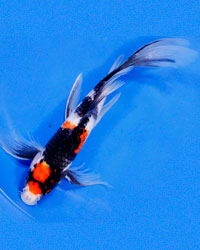
Named for the Showa (show-WAH) era (1926-1989) in which it was developed, this fish is also a three colored koi, but is black based with the shiro (white) and hi (red) overlaid. The hi and sumi will get brighter over the course of the koi’s lifespan and will even change over time.
The sumi (black) is more prevalent in the Showa and is banded to include the belly. It will also have sumi on the head, as well as the pectoral fins, which will further distinguish it from a Sanke Koi. With the inception of the Kindai (modern) Showa, the black has diminished while the white has become more prominent.
What To Look For:
- Black originating at the base or knuckle of the fin and fanning out (Motogoru) is preferable
- Black should not cover the entire pectoral fin
- Red should preferably be dominant
- Equal proportions of white and black
- All three colors on the head
- Evenly-distributed three-color pattern across the whole koi
- Sharp edges between the three colors
Showa in stock
Sourced from some of the biggest farms in the world, Next Day Koi offers a broad selection of eye-catching Gosanke koi fish for sale. Contact us to see how we can add the beauty of a Kohaku, Sanke or Showa to your pond, using our industry-leading shipping times and rates to get them there in as short a time as possible.

